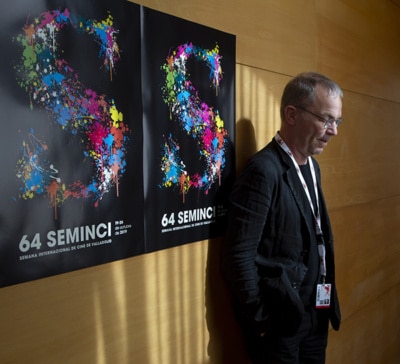
10/25/2019.- On Friday, filmmaker Thomas Heise presented his latest feature-length documentary Heimat is a Space in Time at the Cervantes Theatre. The film, featured in the Time of History section, is a collage of images, letters, diaries, and voices depicting more than one hundred years of German history.
Thomas Heise himself reads in a voice-over the letters that his ancestors sent each other between the late nineteenth century and the twentieth century. Meanwhile, the director’s personal files are shown on the screen. These are interspersed with black-and-white sequences which play with sound and silence, and show different places. The result is a journey through the lives of three generations and the country’s history through the First and Second World Wars, the division of Germany, and the fall of the Berlin Wall up to the present day.
The documentary, which is 218 minutes long, was filmed in just a month over February 2018. After the screening, director Thomas Heise said that “the film was approached with freedom, without a pre-established script.”
The plot line of Heimat is a Space in Time is the correspondence between the filmmaker’s ancestors. “I read fragments out of 40 letters throughout the film. The originals were much longer, so I selected the parts that were most interesting to me,” said Heise on the subject. About the abundance of sequences showing today’s landscapes, the German filmmaker said: “I wanted to focus on this environment because what remains is nature, not people.”
The director included several metaphors in the parts of the documentary that are set in the present day. “Trains appear several times because they illustrate the deportation of people, as well as their union and separation throughout life, which, like trains, has its own mechanism and rhythm.” Heise also said he doesn’t believe Germans still keep in mind everything that happened in Germany during the years portrayed in the documentary.
Thomas Heise has worked as a writer, and as a stage and documentary film director. His work as a documentary filmmaker focused on portraying the underprivileged classes in East Germany until the fall of the Wall. Since then, his films have depicted the most devastating effects the reunification has had on those same groups of civilian population. In recent years, he has focused on other topics and settings with films like Gegenwart, Stadtebewohner and Die Lage.